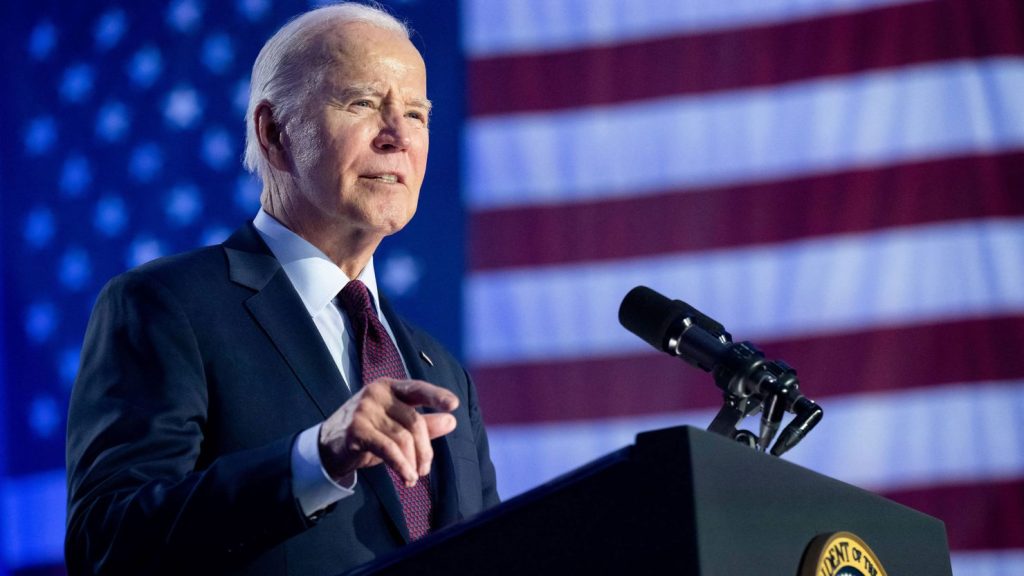In a decisive and controversial step, President Joe Biden is preparing to sign an executive order that will halt asylum requests at the U.S.-Mexico border once the average number of daily encounters reaches 2,500. The border will reopen for asylum seekers only when this number declines to 1,500. This executive action represents Biden’s most assertive attempt yet to manage immigration and address the persistent challenges at the southern border.

Immediate Impact and Details of the Order
The proposed order is expected to have an immediate impact, given that current daily encounter numbers exceed the 2,500 threshold. The announcement is set to be made at the White House on Tuesday during an event attended by border mayors. This move comes after months of deliberation and in the wake of bipartisan legislative efforts to tighten asylum rules failing due to Republican defections led by former President Donald Trump.
The executive order includes specifics on managing the shutdown and reopening of asylum requests. The daily averages of 2,500 and 1,500 encounters over a week will trigger the closure and reopening of asylum processing, respectively.
Senior White House officials, including Chief of Staff Jeff Zients and Legislative Affairs Director Shuwanza Goff, have been briefing lawmakers about the details of the order. However, several questions remain about the practical implementation, particularly regarding cooperation from Mexican authorities.
Legislative and Political Context
Biden’s decision to pursue executive action follows the collapse of a bipartisan legislative effort to impose stricter border and asylum controls. The failed deal was undermined by the influence of Donald Trump, who urged Republican lawmakers to abandon the agreement.
Despite a recent decline in illegal border crossings, partly due to enhanced cooperation with Mexico, the Biden administration has decided to act unilaterally to preempt a potential surge in encounters later this year, particularly ahead of the November elections.
The executive order borrows elements from the bipartisan Senate border deal, including the strategy of limiting asylum requests based on encounter numbers. The administration is encouraging migrants to use the U.S. Customs and Border Protection’s CBP One app to schedule asylum appointments at ports of entry. The app currently facilitates about 1,450 appointments per day.
Legal and Humanitarian Concerns
The executive order will invoke Section 212(f) of the Immigration and Nationality Act. This provision grants the president broad authority to block the entry of certain immigrants if deemed detrimental to national interests. This legal framework was previously used by Trump for some of his most stringent immigration measures.
Anticipating legal challenges, advocacy groups like the American Civil Liberties Union are preparing to contest the order in court. Lee Gelernt, an attorney for the ACLU, has indicated that a policy effectively shutting down asylum raises significant legal issues similar to those encountered during Trump’s administration.
Democratic lawmakers have expressed concerns over the executive order. Senator Alex Padilla of California, a vocal critic of the Senate’s previous border bill, described the pending order as an incomplete strategy.
He advocates for a comprehensive approach that addresses the root causes of migration, such as poverty and unrest in Latin America. Although he acknowledges the administration’s ongoing efforts, Padilla has also pushed the White House for executive actions that benefit immigrants.
Cooperation with Mexico
Effective implementation of the executive order will require substantial cooperation from Mexican authorities. This cooperation is essential for managing the logistics of turning away asylum seekers at the border. Texas Democrat Representative Henry Cuellar emphasized the importance of Mexico’s role, noting that without Mexican support, the U.S. would face significant challenges in executing the order.
Options such as deporting migrants or returning them to Mexico would necessitate close collaboration between the two countries.
The timing of the executive order is also linked to Mexico’s recent presidential election, which saw Claudia Sheinbaum elected as the nation’s first female leader. President Biden has expressed his commitment to advancing mutual interests with Mexico. However, it remains unclear whether the pending order was a topic of discussion during a recent phone call between Biden and Sheinbaum.
Humanitarian and Legal Implications
The executive order has raised alarms among immigration advocates who fear the potential humanitarian consequences. Jennifer Babaie, an attorney at the Las Americas Immigrant Advocacy Center in El Paso, Texas, expressed concern that formal deportation orders without the opportunity to seek asylum would be detrimental to migrants.
Under the new order, migrants could face felony prosecution if they attempt to re-enter the U.S. after being deported and would also face bars on future legal entry.
Comparatively, the pandemic-era Title 42 policy allowed for the expulsion of migrants without legal consequences, giving them the chance to try again. Babaie warns that Biden’s proposed order is even more extreme, as it not only puts migrants in harm’s way but also imposes severe legal penalties for re-entry attempts.
The Final Note
President Biden’s forthcoming executive order to shut down asylum requests at the U.S.-Mexico border represents a significant and contentious effort to control immigration. While the order aims to address the high numbers of daily encounters and manage border security more effectively, it also raises substantial legal, political, and humanitarian concerns.
The administration will need to navigate these challenges carefully, ensuring cooperation with Mexican authorities and addressing the potential legal battles and humanitarian implications that may arise. As Biden prepares to unveil this bold move, the debate over the balance between border security and humanitarian responsibility continues to intensify.





